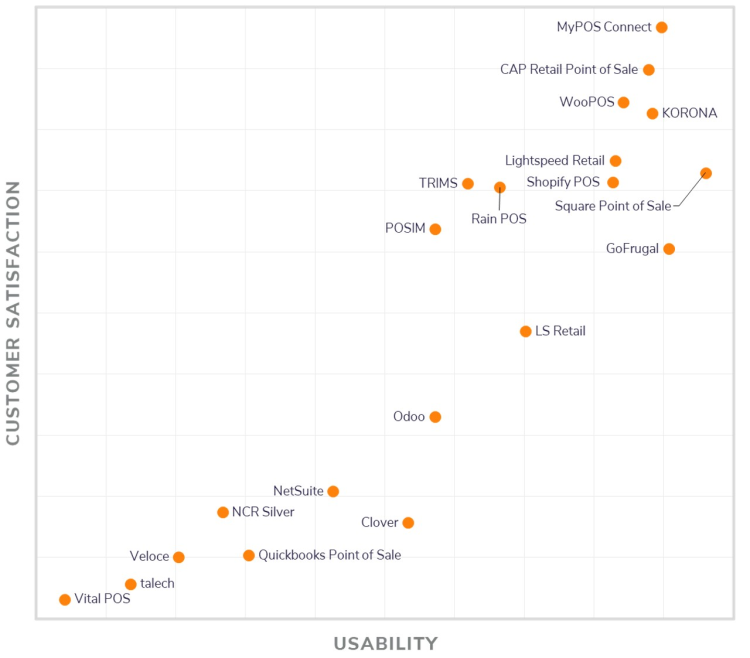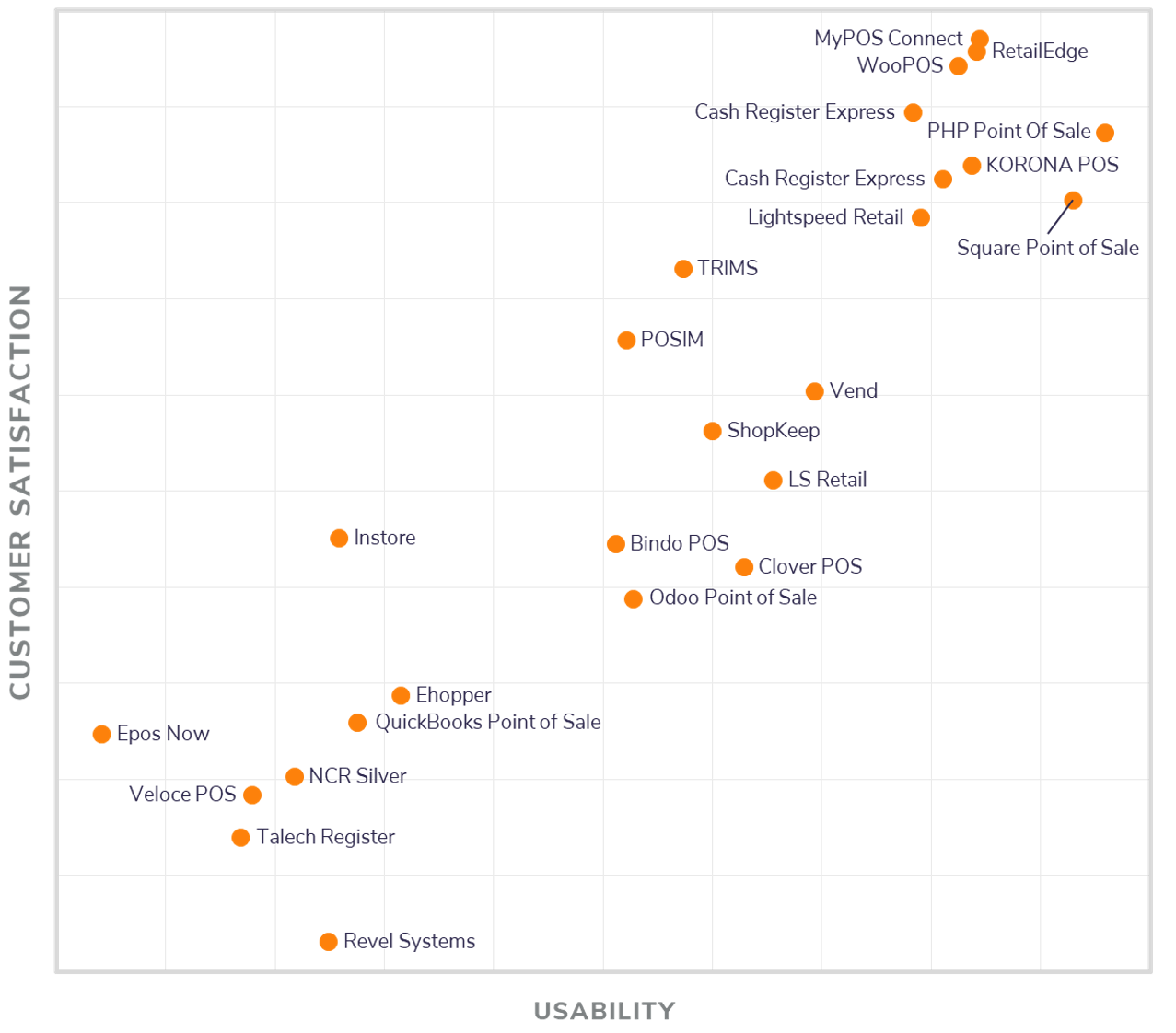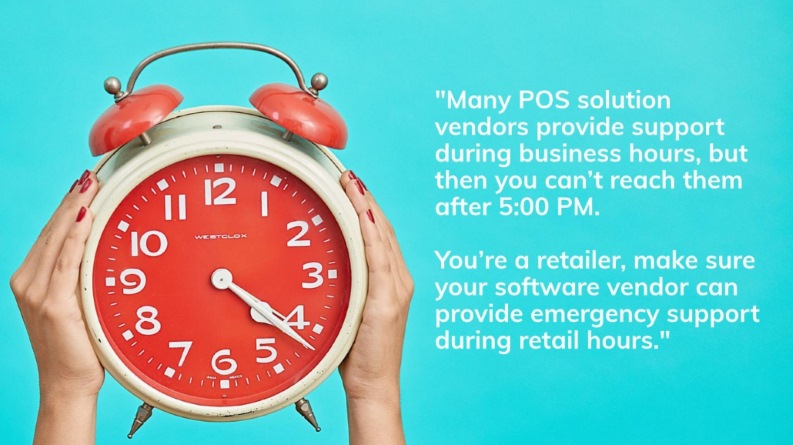POS System Update – We’re moving to Microsoft Azure!
We’re excited to announce that MyPOS Connect is partnering with a new server hosting and management company and will be relocating your database to new Microsoft Azure servers.
Why are we relocating?
This server move is part of our ongoing efforts to maximize security and provide improved performance and scalability.
How will this affect you?
For most of you, the move should be seamless and you won’t even realize that you’ve been moved except for when you receive an email providing login instructions for the new Reports Portal. Your database will be moved outside of business hours between the hours of 10:00 PM and 7:00 AM (your time), and you should experience little or no downtime during that period.
For the few of you who don’t subscribe to a static IP address, now’s the time to get one set up by your Internet Service Provider. With the new and improved security, our Support Team will no longer be able to update your IP address to the safe list. For that reason, we expect that it will take longer (30 to 60 minutes or more) to add or update an IP address; so if you’re sitting on the fence regarding moving to a static IP address, now would be a good time to make the move!
What do you need to do?
For most of you, no action is required. Just make sure that your devices are all using the latest version of MyPOS Connect. For users who rely on the MyPOS Connect Web API to connect your website to MyPOS Connect, you will be notified in advance of your move date and you will need to keep your web development team updated so that they can change the API settings on the same day.
Questions?
If you have any questions, please contact our support team at support@tricityretail.com
Customer Loyalty: How to Cultivate and Keep Loyal Customers
To call customer loyalty important would be an understatement. Your customers keep you going. No customers, no business. And getting new customers is harder and more expensive than developing your existing customer base. So it makes a lot of sense to build customer loyalty by creating a customer loyalty program within your organization.
A loyalty program is your way of saying ‘Thank You” to your customers. Of course, it’s about revenue, but it’s also about gratitude. You’re grateful to your customers for their patronage. So let’s talk about some of the best customer loyalty program ideas we’ve seen in the retail industry.
Customer Loyalty Idea #1 – Use Personalized Emails
Have you ever sent your customers a ‘Happy Birthday’ email? You should – it’s a great way to tell your customers you care about them, far beyond just being a source of revenue. You could offer them a birthday discount in that month as well, or perhaps even customize pregnancy planning emails for new moms in their first year of motherhood.
Show your customers you care about them. There are a variety of email platforms that can help you customize birthday, pregnancy and special occasion email campaigns.
Customer Loyalty Idea #2 – Customer Loyalty Cards and Rewards Programs
Here’s one of the more obvious ways to create a customer loyalty program. We’ve all seen rewards cards from the supermarket and various coffee chains. You could create a customer rewards program of your own. You could do it with plastic cards if that’s within your budget; but you could also do it with punch cards, which are far cheaper to make and easy to set up.
You know the type. It’s the kind at your favourite local pizza shop, where you buy 10 slices of pizza and the eleventh one is free.
Experiment with loyalty cards and programs. They don’t have to be hard or expensive. It’s little things like this that can keep your customers coming back.
Customer Loyalty Idea #3 -Make Loyalty Easier For Your Customer
Is there anything more annoying than when you call a company and you’re asked to press 30 different buttons, only to be placed on hold for the next 15 minutes? What about going into a store that requires you to have your loyalty card present in order to get your loyalty discount?
Don’t be that business. Make it easy for your customers to get their rewards. For example, MyPOS Connect allows you to easily look up loyal customers by using a phone number or a name or any part of their address. Type anything into the POS system screen and MyPOS Connect’s multi-word search capability will find your customer quickly.
Customer Loyalty Idea #4 – Excel At Something
Every business has a story. It’s important for you to know yours, and to get it out there. For example, some companies are renowned for their lifetime guarantees – even if the current owner of the product or service was not the original buyer. For others, it’s their passion. And for others, it’s being at the edge of pop culture.
So what’s your story, and what do you excel at? With us, it’s our award-winning technical support. For you, it may be something else.
Here’s our point: find your strength and promote it. You know you’ve arrived when customers return to your business for that very reason.
Customer Loyalty Idea #5 – Ask For Customer Feedback
You should never, ever, ignore customer feedback. It’s not a coincidence that businesses with a large number of Google reviews tend to show up earlier in local business search results. Good reviews start with good service. If you’re proud of the service your business provides (and if you’re not, that needs to change), ask your customers to review your business! You can incentivize them with discounts if you like. But you could also simply ask your customers to review your business in your email campaigns after making a certain amount of purchases.
Pay attention to what your reviewers are saying, too. If they’re complimentary, keep up the great work! If they’re not, listen to them.
Feedback is exactly that – it’s feedback. It’s an effective way to learn what you’re doing right and where to improve.
Reach Out to Tri-City Retail To Help Grow Your Business
Customer loyalty is an ongoing target. It’s something you build into your business, starting with your main ‘customer touch points’: whether that’s you or your staff at the Point of Sale, or anywhere else in your store that your customers engage with your team.
We’ve seen a lot of success with customer loyalty programs through integration with our point of sale system in the past 25 years, and we’ve seen a few failures too. So do it right and start today. Make customer loyalty a priority for your company, and remember, you can always reach out to us here at Tri-City Retail for convenient and effective ways to grow your business.
Tri-City Retail Systems Celebrates 25 Years in Business
25 years ago, we started Tri-City Retail Systems by selling and installing cash register systems in our own local area.
After two and a half decades, we’ve deployed Point of Sale system solutions for over 1,000 retail companies across North America.
So we’d like to take this opportunity to say thank you! Thank you, to our amazing team of POS technology experts who have relentlessly worked to help our customers succeed. Thank you, to our suppliers and our many technology partners who have enabled us to continually evolve in an ever-evolving industry. But most of all, we’d like to say thank you to our loyal customers, both large and small, without whom we would not exist. You have pushed us to be better.
Your suggestions and feedback over the years have helped us to develop what the retail industry views as one of the best retail point of sale product and service offerings available. Thank you, from the bottom of our hearts; and here’s to another 25 years of success for us all!
MyPOS Connect Once Again Listed in Retail POS Front Runners Report
Tri-City Retail Systems is proud to announce that we have been named in the FrontRunners 2021 edition of the Software Advice Buyers Guide.

Industry-leading business software advocate and research platform, Software Advice, has just named MyPOS Connect as a leading Retail POS System in their 2021 buyer’s guide report following up from its top position in 2020. MyPOS Connect showed up in the #1 position for Customer Satisfaction and we are especially proud of that designation.
In the chart below, the ideal positions are toward the upper right quadrant, which highlights the industry leaders in Customer Satisfaction and Software Usability. This year we have created space between us and the next software. There was quite a shake-up this year.

In order to be included for consideration in the above chart, there are a series of requirements that each software product must meet. Each axis is based on a cumulative score, as outlined below:
- Customer Satisfaction is based on end-user ratings and feedback provided to Software Advice
- 25% – Value for Money
- 25% – Likelihood to Recommend
- 50% – Customer Support
- Usability is based on user feedback from a 24-month analysis period.
- 50% – Functionality
- 50% – Ease-of-Use
Software Advice is the leading online service for businesses navigating the software selection process. Advisors provide free, personalized software recommendations, helping companies of all sizes find products that meet their business needs. Software Advice also features objective research by industry experts and reviews from validated users, saving buyers time and resources.
Software Advice is a division of the Gartner Group, a giant in the enterprise customer experience management software research market. Gartner also provides software selection and consulting advice for all types of business systems.
Read the complete report here: https://www.softwareadvice.com/retail/#buyers-guide
Learn more about Software Advice here: https://www.softwareadvice.com/
FrontRunners constitute the subjective opinions of individual end-user reviews, ratings, and data applied against a documented methodology; they neither represent the views of nor constitute an endorsement by, Software Advice or its affiliates.
Tri-City Retail Listed in Retail POS Front Runners Report
Tri-City Retail Systems is proud to announce that we have been named in the FrontRunners 2020 edition of the Software Advice Buyers Guide.

Industry-leading business software advocate and research platform, Software Advice, has just named MyPOS Connect as a leading Retail POS System in their 2020 buyer’s guide report. MyPOS Connect showed up in the #1 position for Customer Satisfaction and we are especially proud of that designation.
In the chart below, the ideal positions are toward the upper right quadrant, which highlights the industry leaders in Customer Satisfaction and Software Usability.

In order to be included for consideration in the above chart, there are a series of requirements that each software product must meet. Each axis is based on a cumulative score, as outlined below:
- Customer Satisfaction is based on end-user ratings and feedback provided to Software Advice
- 25% – Value for Money
- 25% – Likelihood to Recommend
- 50% – Customer Support
- Usability is based on user feedback from a 24-month analysis period.
- 50% – Functionality
- 50% – Ease-of-Use
Software Advice is the leading online service for businesses navigating the software selection process. Advisors provide free, personalized software recommendations, helping companies of all sizes find products that meet their business needs. Software Advice also features objective research by industry experts and reviews from validated users, saving buyers time and resources.
Software Advice is a division of the Gartner Group, a giant in the enterprise customer experience management software research market. Gartner also provides software selection and consulting advice for all types of business systems.
Read the complete report here: https://www.softwareadvice.com/retail/#buyers-guide
Learn more about Software Advice here: https://www.softwareadvice.com/
FrontRunners constitute the subjective opinions of individual end-user reviews, ratings, and data applied against a documented methodology; they neither represent the views of, nor constitute an endorsement by, Software Advice or its affiliates.
7 Things to Consider Before Buying a POS System. Don’t Make These Mistakes
If you’re thinking of purchasing a new POS solution, take note of these seven things to consider when buying a Retail POS System
Waiting too long to buy a POS system
The number one mistake made by a lot of first-time retailers is buying a POS system just a week or two before opening their store. They spend all of their time buying merchandise, managing tradespeople, and hiring employees. However, the important task of purchasing a retail POS system is often left until the last few weeks, or days, before opening. This is a huge mistake because the process of evaluating POS systems, choosing the right one for your business, and then deploying it can take weeks or even months. It’s not a trivial task, it’s a big job and it’s a complicated one. So, start your evaluation as soon as possible; why not right after you sign the lease agreement for your store? You can use the next few months to evaluate systems and find the one that best suits your business and budget. Oh, and make sure you learn how long it will take to order all your hardware components and perform the specific tasks necessary to deploy your system. You don’t want to go through a long evaluation process to find the right system, and then find out that you don’t have enough time to deploy it before you open your store. Your vendor should be able to provide a basic overview of the deployment process, including approximate delivery times of any hardware components, and a list of tasks you will have to complete on your own before you can start using the system. Work with your vendor to create a realistic installation and training schedule that will ensure your POS system and your employees will be ready to go when your store opening day arrives.
Buying the POS hardware before the software
Don’t buy your POS hardware before you choose your POS software. It’s like putting the cart before the horse and it’s one of the biggest mistakes that new retailers make when investing in a new POS system. It is always better to evaluate software solutions first. Choose the software that fits your business environment and budget, then choose a POS hardware vendor that works best with the software. Plus, your software vendor will be able to recommend the best hardware vendors for their software. Proving that it’s a bad idea, here are some examples of common predicaments in which retailers find themselves when buying hardware first:
Ways to torpedo your POS Software Selection
- They buy an iPad or Mac because it looks great but then they take all Windows-based apps out of their evaluation. Since the majority of business programs run on Windows software platforms, they can’t find software that is flexible enough for their needs or expandable enough for their growth plans.
- They buy a computer system with a regular monitor, and then they buy a software program that relies heavily on using a touch-screen monitor. Now they have to buy a touch-screen monitor and they have a regular monitor that collects dust and takes up space.
- They buy equipment online such as POS peripherals (receipt printers, cash drawers, barcode scanners, etc.) to find out that they don’t match the ports on their computer.
Not evaluating the POS hardware vendor
Many retailers purchase hardware on the internet with no regard for the company supplying the products. Unless you have prior experience with their products and services, evaluating the vendor is a must. What retail-specific experience do they have? What are their warranty programs and how do they handle repairs and replacements? If they are an online vendor, where is their repair depot? Who bears the cost of shipping warranty repairs to and from the repair depot? How easy is it to access support after hours and on weekends? Talk to each vendor and learn what support services they offer to complement the products they sell. It usually makes sense to pay a bit more for hardware if the vendor can provide value-added services, like Next-Business-Day swap-outs, or technical assistance with device drivers and operating system upgrades. A knowledgeable vendor will also assist you in comparing different products and ultimately choosing the specific models that will work best in your environment and with your software application.
Not evaluating the POS System vendor with enough scrutiny
The software vendor you choose is as important as the software itself. Many retailers buy their POS solutions solely based on functionality and price, without any regard for who is selling them the software. Ask yourself, does the vendor have a lot of experience selling to retailers in my market? An experienced vendor who has deployed systems for a lot of similar retailers can help you learn the software faster and provide a lot of tips and tricks that will save you time and money. In addition, most POS software vendors are familiar with their competitors’ products and can speak to key differences in their offerings. This will help you compare apples to apples more easily. What about the professional support services offered by the vendor? Can you sign up for one-on-one training programs or do you have to teach yourself how to use their software, relying on online tutorials or user manuals? These are great tools as occasional reference materials, but they don’t compare to the benefits you’ll get when you’re trained by an experienced software expert who can personalize your training program and offer guidance and knowledge throughout the deployment process. What about after your system is deployed and you are actually using the software in your business; do you have access to end-user support when you need it? Many POS solution vendors provide support during business hours, but then you can’t reach them after 5:00 PM. If you’re a retailer, make sure your software vendor can provide emergency support during retail hours.

Not evaluating enough POS software programs
Don’t just purchase the first POS software program you evaluate; or the cheapest program on the market. Not all POS software is created equal. There are many point-of-sale systems that only provide very basic features and functions; and many that have hidden costs that you won’t know about until after you fork over your credit card info. By evaluating multiple retail systems, you can compare the features and costs of each and come to a more informed decision. You don’t need to evaluate every POS software program on the market but you should see demonstrations of at least two or three before choosing one for your business.
Evaluating too many POS software programs
After Mistake # 5, it might seem counter-productive to say this but sometimes you can evaluate too many solutions. After a while, you experience “information overload’ and start mixing up which solutions provide which features. When this happens, it’s not uncommon for people to start their evaluation over from scratch – or just choose the first (or last) or cheapest solution and hope for the best. It’s okay to reach out to a lot of vendors and POS solution providers for your initial introductory calls or discussions, but distill your list down to two or three vendors that can give you detailed demonstrations of their solutions. You’ll be able to compare better and you won’t waste your time (and other people’s time) running around in circles trying to remember which products provided which features.
Choosing a Merchant Services Provider before buying your POS system
Another mistake retailers make when purchasing their first POS system is choosing the company that will process credit cards and debit cards for them before they buy their POS system. Since banks offer a wide variety of merchant services, including credit/debit card processing services, they will always try to sign you up for their merchant services offerings when you set up your bank account. But it’s premature to do it before you buy your POS system because if you want your system to integrate into your Merchant Services Provider’s host processor, you will need to choose a POS system that has already been certified by your Merchant Services Provider. Most POS systems are integrated into multiple Merchant Services Providers, but not necessarily to the one your bank promotes. So if you want the benefits of having an integrated card payment solution, make sure you choose your POS system first; then ask your POS vendor which Merchant Services providers they support; and negotiate a contract with one of them.



